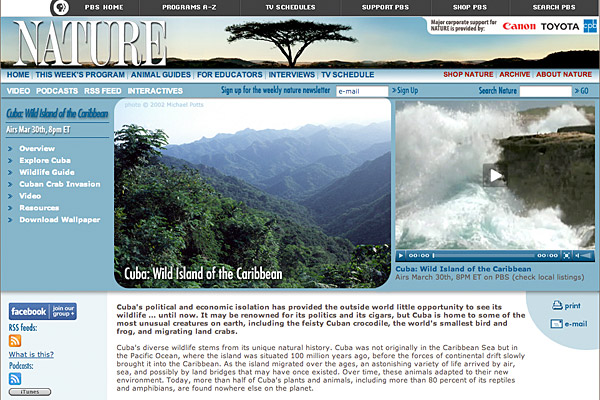12 Multimedia
Considerations for Multimedia
Multimedia comes with a relatively high price tag, for both preparation and delivery, and should be used purposefully. Too often web authors include visual or moving elements on the page to grab the user’s attention. This approach is based on the assumption that web users have short attention spans, which in many cases may be true. However, the solution is not to add gratuitous eye candy to your web presentation, which may, in fact, command too much of your users’ attention and detract attention from the main content of your page. Use images, animations, video, and sound only when they are relevant to your message (fig. 12.1).

Figure 12.1 — Multimedia is powerful. Use it carefully to support the central themes and content topics of your site.
Bear in mind, too, that there are technical limitations to the delivery of audiovisual content via the web. For example, both long- duration video and video that requires smooth motion or clear details require large amounts of bandwidth to deliver and may tax the capacity of the user’s machine. A significant amount of downsampling and compression is required to create a file that is small enough to be delivered via the web. In some cases, these compromises may be too significant to warrant the effort. When you are considering adding multimedia to your pages, make sure the technology can meet the demands of your content.
And finally, be aware that whenever you put multimedia content on your web pages you potentially shut out users. For example, vision-impaired users cannot see content such as graphics, video, or animations. To access visual content, they need a text alternative that can be spoken by a screen reader. Hearing-impaired users rely on content they can see and need a visual alternative to any audible materials. Initiatives such as Section 508 and the Web Accessibility Initiative have produced guidelines and mandates requiring that nontext content be rendered in an alternate format that is accessible to disabled users, such as text captions for audible content and text descriptions of visual content.
When planning for multimedia content, take into account the needs of users with disabilities: both technology-disabled users who are connecting to the Internet via modem, cell phone network, or slow wireless or are using “thin” mobile devices or outdated machines, and physically disabled users for whom multimedia content may be out of reach.









